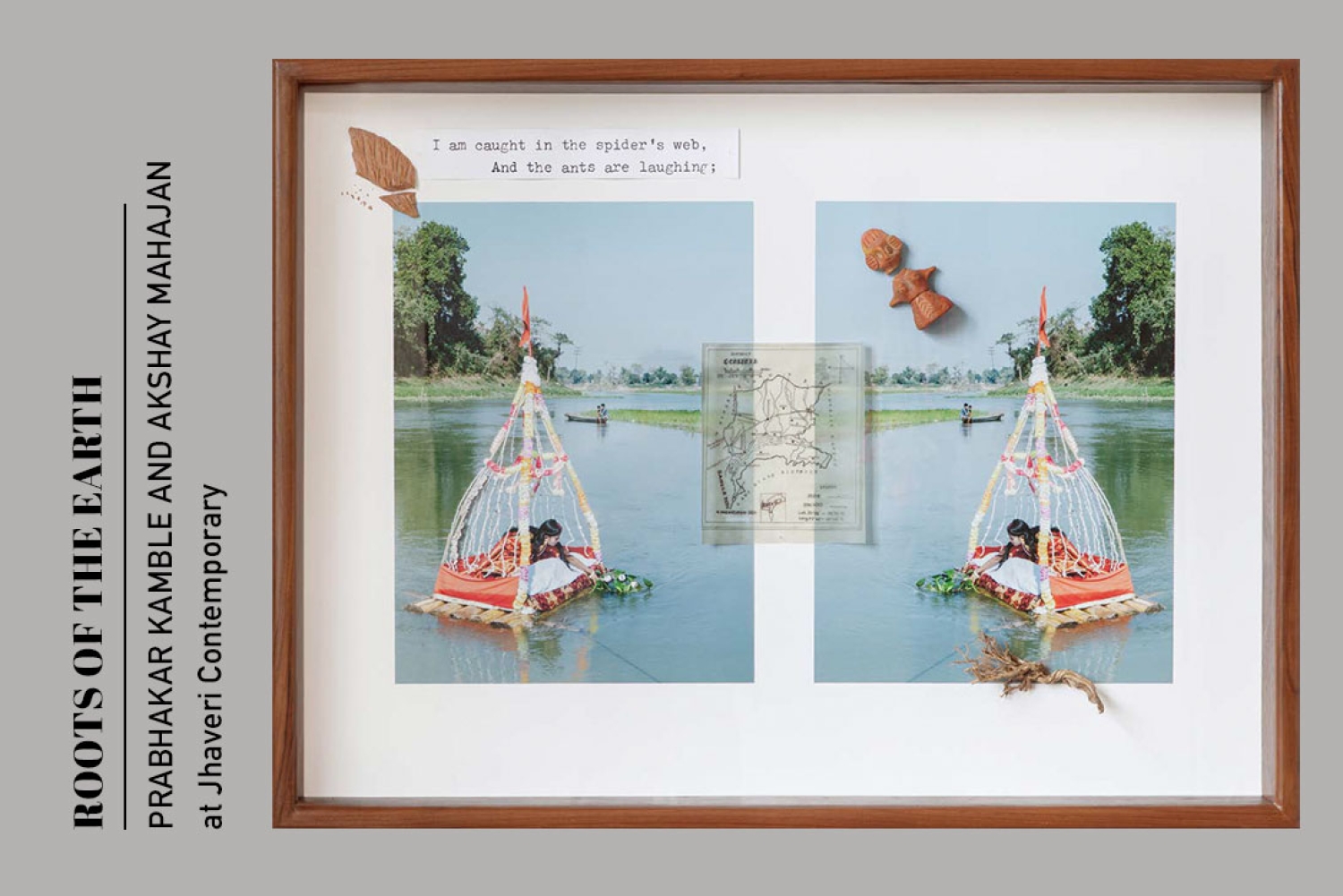

Roots of the Earth brings together the compelling works of Prabhakar Kamble and Akshay Mahajan, as they delve into the concept of memory—both individual and collective—and use it to challenge established historical narratives. The show serves as an exploration of communities historically erased from official records, yet still vibrant with rich traditions and stories. By weaving these narratives into the fabric of Indian history, the artists shine a light on voices that have been silenced over time.
Prabhakar Kamble’s sculptures are a direct extension of his Ambedkarite activism and his advocacy against caste-based discrimination. His striking work, such as the Chandelier Series (2025), incorporates neon ropes, braided shells, and cowbell chimes to symbolically honor lower-caste communities whose labor has been foundational to the development of India. These works call attention to the people who have often been overlooked, while simultaneously celebrating their contributions. On the other hand, Akshay Mahajan’s series People of Clay (2017-ongoing) brings to life the diverse communities living in the riverbeds of Assam’s Goalpara district. Through photographs, terracotta figurines, textiles, and text, Mahajan creates an archive of sorts, offering a tangible representation of the traditions that sustain this region and its people.
The artists’ work collectively challenges the one-dimensional, authoritative narratives of history, suggesting instead that truth is fluid, multifaceted, and often contradictory. Kamble and Mahajan both invite us to reflect on how history is not just shaped by the powerful but also by those whose stories remain untold.
Prabhakar Kamble, also a curator and activist, is the convener of the Secular Art Movement, which advocates for secularism, social justice, and equality through artistic interventions. Akshay Mahajan, who lives and works in Thivim, India, uses photography as a medium to explore the layers of culture, memory, and the connections between post-colonial realities and pre-colonial pasts. Through his meticulous examination of urban landscapes and folklore, Mahajan uncovers the complex relationship between historical narratives and the present-day world.
Kamble and Mahajan remind us that history is a living, breathing entity—constantly shifting and evolving as we give voice to the forgotten and the marginalized. In their work, we find a powerful invitation to question the narratives we've inherited, while celebrating the resilience and richness of the communities that continue to shape our world, even in silence.
Words Platform Desk
Date 21-07-2025